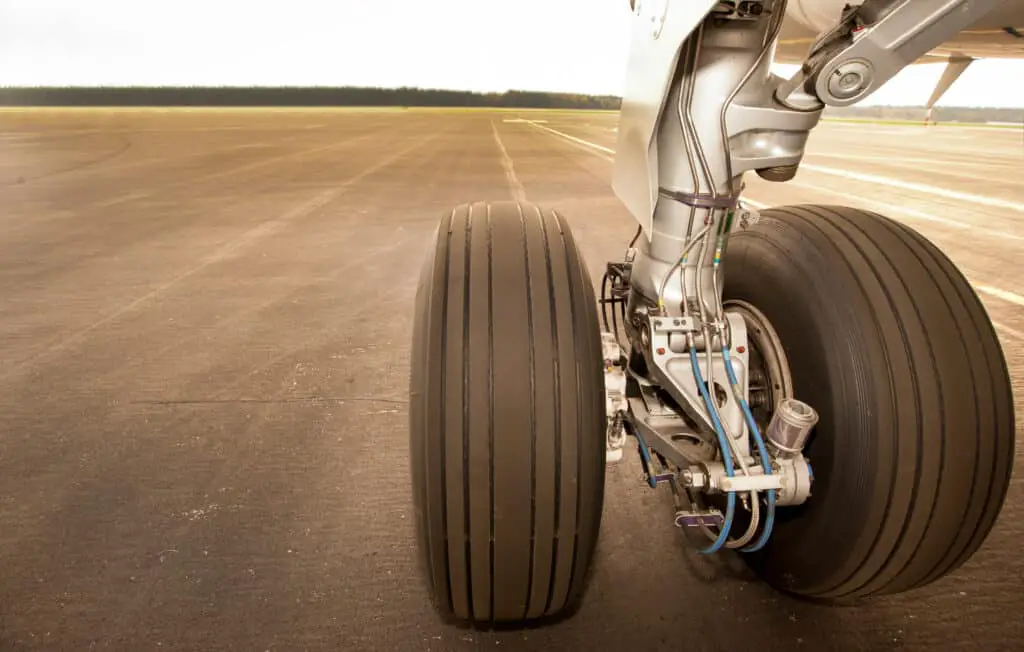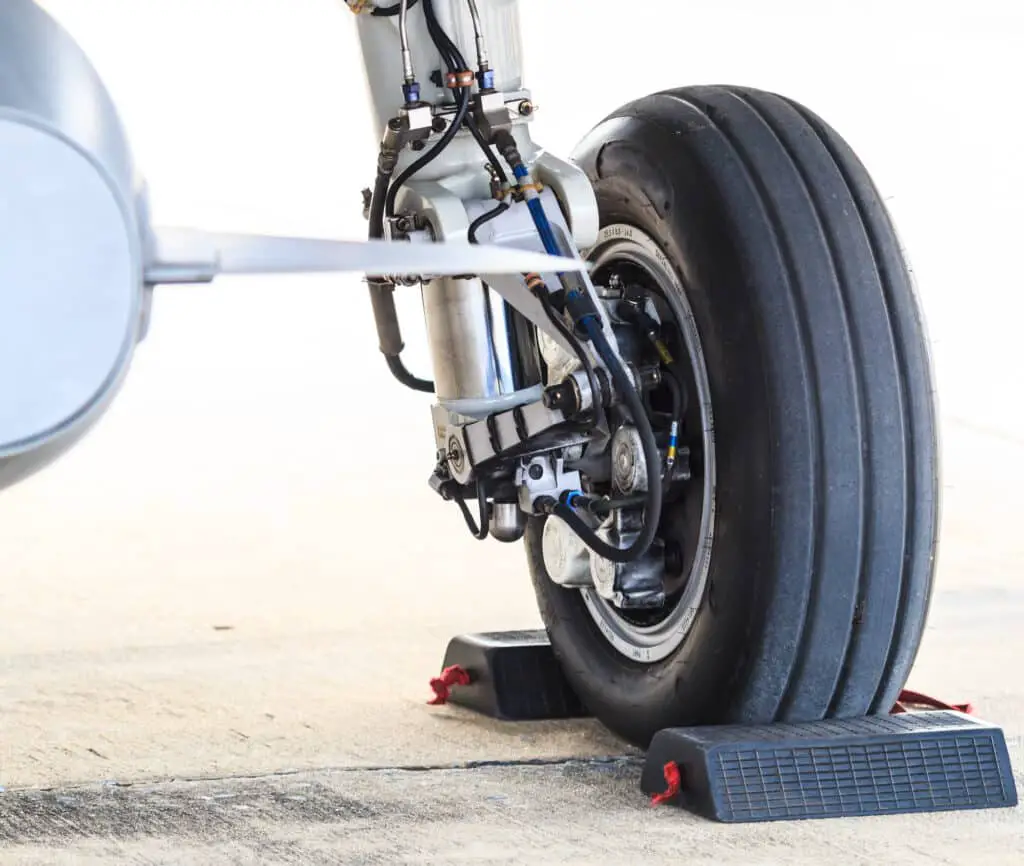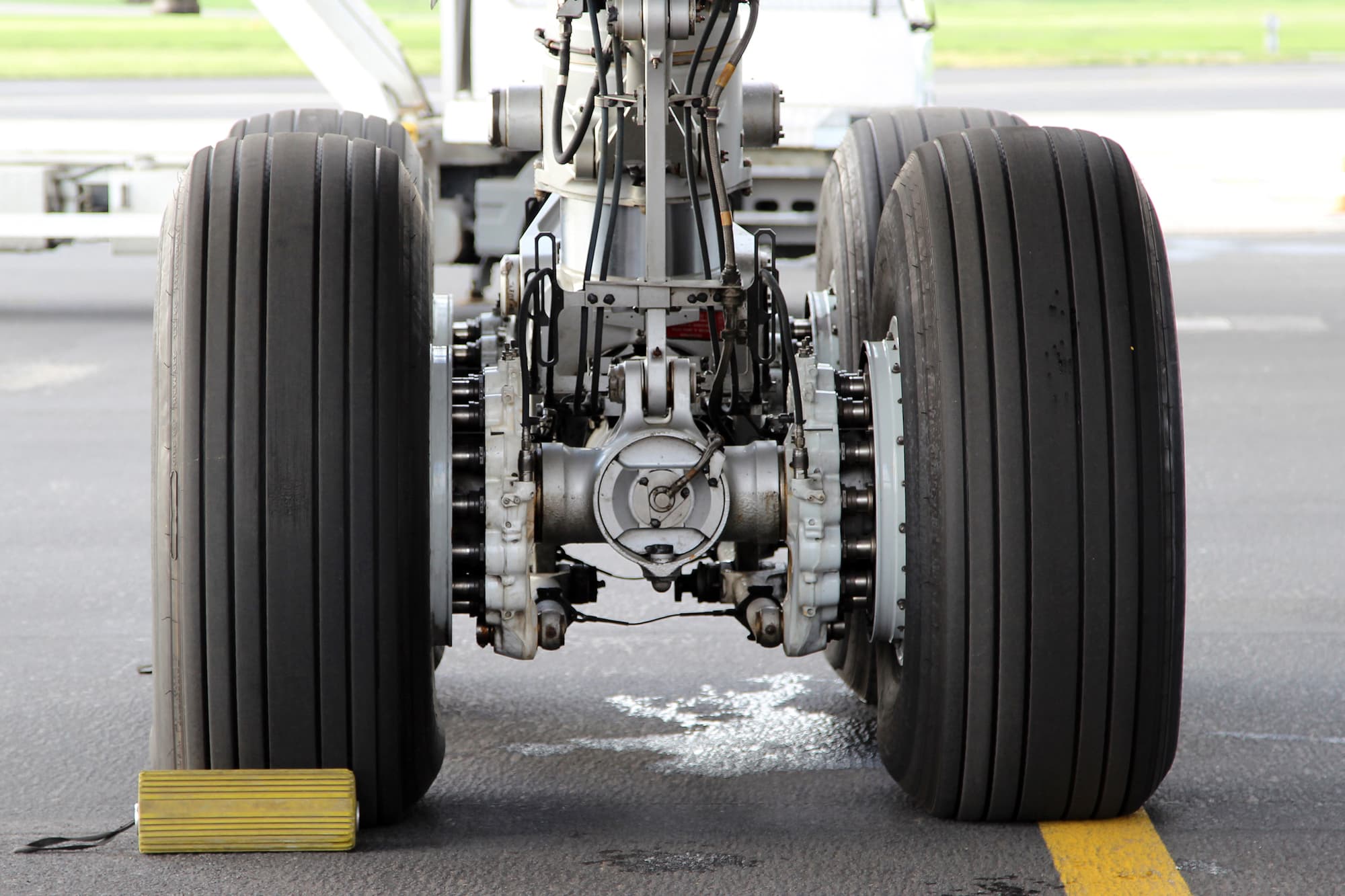Anyone who has been on a plane knows how fast a plane can stop once it lands, which is quite impressive given its size. The brakes in a plane are powerful, but they also heat up every time they are used to stop the plane.
So how hot do aircraft brakes get?
According to Boeing, airplane brakes can get as hot as 700 to over 1000 degrees Fahrenheit, depending on the model of the plane and the brake material. Temperatures below this range are considered normal, but within this range or higher, the brakes are overheating, and they need time to cool down before the plane can move again.
When a plane has been used for multiple consecutive flights, there is more of a chance that the brakes can overheat, which is why they need a break after a few flights.
Newer brakes are less likely to overheat. But brakes that are much older and almost ready to be replaced can heat up to 30% higher, so they are much more likely to overheat.
Planes have a light that indicates to pilots when the brakes are overheated, which means they must let the plane rest to prevent any brake issues.
The light is in the front of the plane, also called the plane’s cockpit.
Once the brakes reach temperatures below 600 to 850 degrees Fahrenheit, depending on the material and model, the brakes are considered cool, and the light goes off. When the light is off, the brakes are cool enough to efficiently stop the plane next time they need to.
This article explains how long airplane brakes need to cool, the types and materials the brakes are made of, and whether or not planes have emergency brakes.
Table of Contents
How Long Do You Let an Aircraft With Hot Brakes Cool?

The amount of time it takes to cool an aircraft with hot brakes varies from a few minutes to a few hours, depending on how hot they are.
The fastest way to cool airplane brakes is to do it when the plane is in the air. Flying for just fifteen minutes will help a plane cool down since the air temperature is so cold.
But, this method only works if the brakes overheat after takeoff. If you are on the ground and the brakes are overheating, you should not take off just to cool them down quickly.
Since brakes overheat on the ground more often than not, it will take longer for them to cool, usually between two and three hours.
But, there are a few ways to make airplane brakes cool faster. First, do not set the brakes, and they will cool faster.
Next, if you have any wind on the ground, you can use the wind to move the brakes. However, this does not work well if all the brakes are overheating since the wind will not blow on them equally. And, if the wind blows air from the exhaust pipe towards the brakes, it will take longer to cool down since the exhaust air is hot.
If brakes do not cool after a few hours, something is wrong with them, and maintenance staff must look at them before flying the plane again.
What Kind of Brakes Do Airplanes Use?
Most airplanes, and almost all new planes, use carbon fiber brakes, which are the best option for large, heavy planes. These brakes are lightweight, which is good for the increasing size of planes that are heavy enough before adding the weight of the brakes.
But even with their low weight, they can still absorb a lot of energy which is the most important part of stopping a plane quickly and safely.
What Are Aircraft Brakes Made Of?

Aircraft brakes are made of either steel or carbon. Steel is more common in older aircrafts, but now most planes are built with carbon brakes.
According to Boeing, carbon airplane brakes have a lot of benefits over steel brakes, including weighing less, lasting longer, functioning at higher temperatures, and needing less maintenance.
First, the carbon brakes can lower a plane’s total weight by 700 to 1,250 pounds on average. Less weight means less fuel needed to operate the plane, which is good for the airlines and the environment.
Next, carbon brakes last up to twice as long as steel brakes, which means they need to be replaced less frequently. The life of airplane brakes is measured in terms of landings.
And, even though they last longer, the cost to maintain carbon brakes is similar to steel brakes throughout their lives. So, the cost per year of carbon brakes is half that of steel brakes.
The benefits of carbon brakes compared to steel brakes also mean they cost more. However, the maintenance and fuel savings can offset the higher initial cost, which is why many airplane manufacturers are switching from steel to carbon brakes.
Another interesting part of a plane is the windshield wipers, which you can learn about here.
Do Planes Have Emergency Brakes?
Planes have an automatic brake system (ABS), which acts as their version of emergency brakes.
If the runway is wet, the ABS will activate to keep the plane from sliding down the runway. The system does not make the plane stop immediately, which would be as dangerous as the plane sliding, but it brakes slowly and safely.
Or, if there is a rejected takeoff (when the plane needs to stay on the runway instead of going into the air), the ABS will activate and keep the plane from speeding off the runway.

